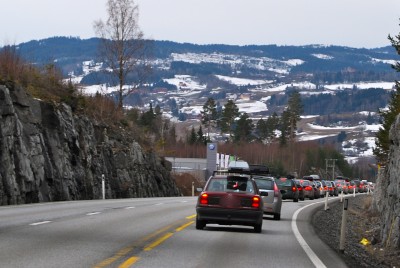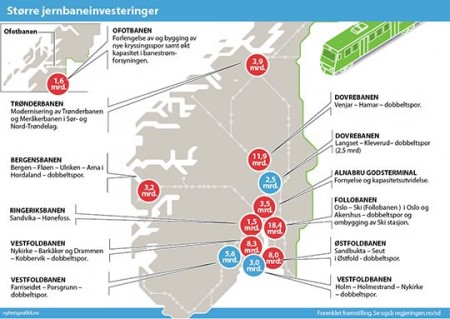Prime Minister Jens Stoltenberg called it the biggest commitment to public transportation projects ever made in Norway, but his left-center government’s release of its new plan for transportation investment during the next 10 years was met with both enthusiasm and criticism over the weekend. Officials in Oslo, where traffic congestion is a major problem, weren’t at all satisfied by the relief offered, but one government minister told them to stop whining.

“It’s completely meaningless whining,” Bård Vegar Solhjell, minister for environmental issues from the Socialist Left party (SV), told newspaper Aftenposten. “I get upset just reading it.”
Solhjell blamed politicians in Oslo and neighbouring Akershus for themselves postponing funding for both a new railway tunnel under the city to handle more subway and train traffic and a new metro or light-rail line out to Fornebu, in Bærum just west of the capital. The airport at Fornebu closed back in 1998 and the area continues to be redeveloped into a major business and residential area, but still is served only by one major access road and bus lines. The public transport lines that arguably should have been planned and built before new homes and offices were built never were.

Now the area, along with other commuter lines and roads in and out of Norway’s biggest city, suffers from congestion and access challenges, and local officials have long hoped for more support from the state. While the government’s new plan, released after weeks of carefully placed leaks hyping projects like a ferry-free route through western Norway and other major projects around the country, does include some funding for widening the busy E18 highway that runs near Fornebu, Oslo-area officials were bitterly disappointed that more money wasn’t earmarked for other urgently needed projects where the vast majority of Norway’s population lives and works.

The government, in rolling out its National Transport Plan from 2014-2023, felt a bigger need to spread the wealth and funding far beyond Oslo, hence the ambitious ferry-free E39 route from Kristiansand to Trondheim that calls for NOK 150 billion of tunnels, bridges and better roads, along with other projects like 380 more kilometers of new four-lane highways and more center medians on two-lane roads. Political forces in Norway have long pitted cities against outlying areas, and nowhere are the results more visible than in transportation projects.

All told, more than NOK 500 billion (nearly USD 100 billion) will be budgeted for transport improvements all over Norway, from more bicycle paths to construction of double-tracks on busy train lines and completion of a so-called Inter-City train line to better link Skien, Hamar and Fredrikstad with Oslo. More money was allocated to help compensate for years of neglected maintenance of existing rail lines, with the hope of making service more reliable.
Harbours are also slated to get more investment, in the hopes of moving more cargo transport from over-burdened and under-dimensioned roads over to ships that can ply the coast. Even though Norway’s airports are largely self-financed through the agency running them, Avinor, the government also wants to maintain and further develop a decentralized airport network over the next 10 years.
Solhjell, along with Stoltenberg and Transport Minister Marit Arnstad said they were “proud” of their transport improvement plans, which may need, though, to rely on follow-up from a new government after the September national elections. If re-elected, Stoltenberg vowed that the plan wouldn’t consist “merely of words. We will follow up with funding.” The government also promised to tackle the piecemeal financing of major projects that’s blamed for the slow pace in getting them completed.
Environmentalists eager to reduce use of private cars still felt there was too much investment in roads and too little in public transport. Some projects like a tunnel for ships at Stad, among the many that were leaked before the plan was released, were dismissed as “fantasy.” Opposition politicians in Parliament complained they have much too little time to debate the plan itself and vote on it. Others don’t like provisions that various cities will have to compete against each other for funding. Traffic delays, in the meantime, are also estimated to be costing billions every year.
Views and News from Norway/Nina Berglund
Please support our news service. Readers in Norway can use our donor account. Our international readers can click on our “Donate” button:

